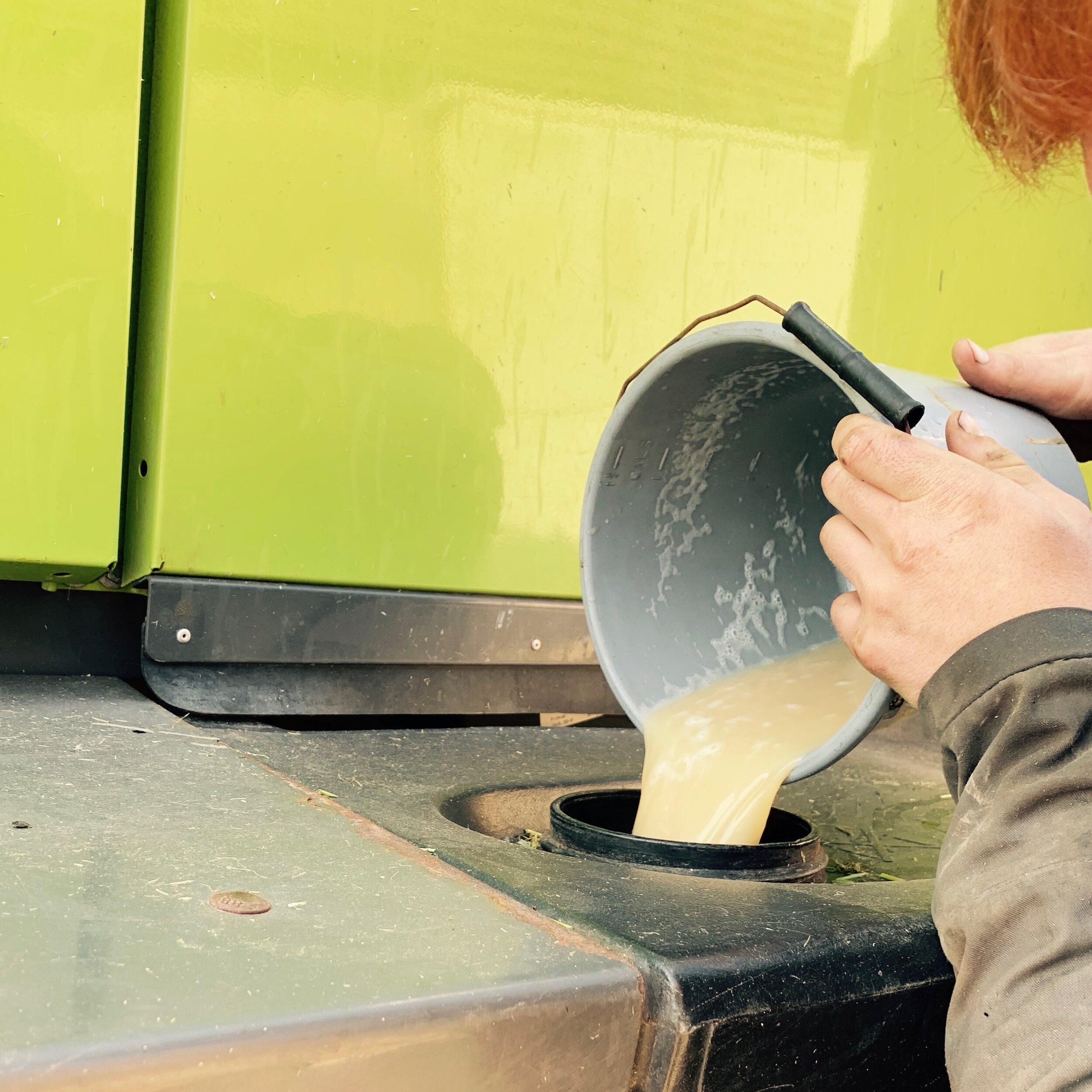Is tap water OK for your silage inoculant?
Silage additives or inoculants are commonly used across much of the UK and Irelands’ forage crops and the majority are applied as a liquid. All, or almost all, silage inoculants are supplied as either a powder or as concentrated liquid that’s diluted with water, but when was the last time you read the label? OK so you read the dilution rate and the dose rate to work out how much to mix, but did you really read all the recommendations about mixing?
It’s all a matter of taste
Buried somewhere in the small print on the packaging will be some guidance about the water for mixing silage inoculants. Now to most of us, water is water and so when a waiter asks what sort of water I want with my meal in the restaurant, I always reply “tap is fine”. But tap might just not be fine for your silage inoculant, so should you be asking to see the water list?
What’s wrong with your water?
The UK has good drinking water standards and we can confidently down that glass of cold water drawn straight from the tap despite our ancient water supply infrastructure. To achieve this safety, the water companies go to a lot of trouble to ensure the water is always safe to drink. And because of that ancient infrastructure, our water will contain small, controlled amounts of chlorine to keep it fresh. Compared to many countries in the world the UK has very low limits of chlorine in our water – typically from 0.2mg/litre to 1.0mg/litre. To minimise their costs the water companies add as little as they can to ensure the water is safe so we can assume most of the tap water in the UK has around 0.2mg/litre of added chlorine.
Chlorine and bacteria
The chlorine is added to control bacterial growth in water so if there has been some work to the mains plumbing or a leak, then the water company will increase the chlorine levels for a while to make sure the water is safe. But that’s then the problem, because you are using the water to carry those precious inoculant bacteria onto the silage and that water has chlorine in it to kill bacteria, any bacteria!
Is chlorine in farm tap water really a problem?
Nothing is ever completely black or white so how much chlorine is too much chlorine? Reading the data many inoculant suppliers will allow levels of 0.1mg/l or 0.2mg/l in the dilution water but if you’re using tap water you really don’t know what the chlorine level is right now. So what can you do?
Well if you can use water from a borehole or spring water then you should. You can even use harvested rainwater as long as it is “fresh” but if your only option is mains tap water, don’t panic, there are things you can add to neutralize the chlorine. De-chlorinating water additives such as Chlor-ex are commonly used in the aquatic industries and are cheap, effective and readily available.
Making inoculant bacteria happy
Whatever the price, inoculant to treat your silage is a significant sum so it makes sense to give it the very best conditions to do its work. If you have to use tap water I would recommend you always use a water de-chlorinator. But there is more you can do to make the little guys feel at home.
The bacteria in your inoculant have been in a state of hibernation for weeks or months before the big day so get them ready for some action. If you can, mix a concentrated starter of inoculant before you “need” it. Most inoculants have a reasonable tank life, up to 72 hrs in some cases, and in general getting the bacteria hydrated and up to ambient temperature 12-24 hrs before you need them can seriously increase the performance. You might feel nervous mixing the inoculant before the chopper has arrived but once the mower has gone to work, you are already committed to making some silage. By getting the bacteria awake and warmed up, you will increase the chances of making that some good silage.
Is water temperature important to inoculants?
Yes and no really. Yes in that the warmer the water the more active the bacteria will be, but no in that the water will soon warm up once it’s in the forage harvester tank as the whole machine is a giant heat soak once those horsepower are call on. Be careful to make sure the temperature does get too high as the bacteria can be damaged if exposed to really hot water, so keep it below 30 degrees C to be safe. If you pre-mix the inoculant, just leave it out of the fridge at ambient or room temperature before it goes in the tank.
So in summary, to make the most of your inoculant
- Use spring or borehole water if you can
- Add a de-chlorinator if using tap water
- Mix while they mow to get off to a flying start
- Keep it in the warm once mixed
- And always read the label
If you want to discuss the options for diluting your silage inoculants or any of the other aspects of silage making covered in this series – contact Jeremy Nash @ jeremy@silageconsultant.co.uk
If you have enjoyed reading this blog post and found it interesting please subscribe to the emails and we will let you know when the next blog is published.

